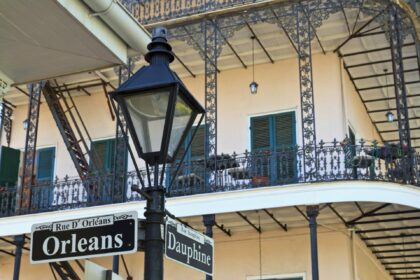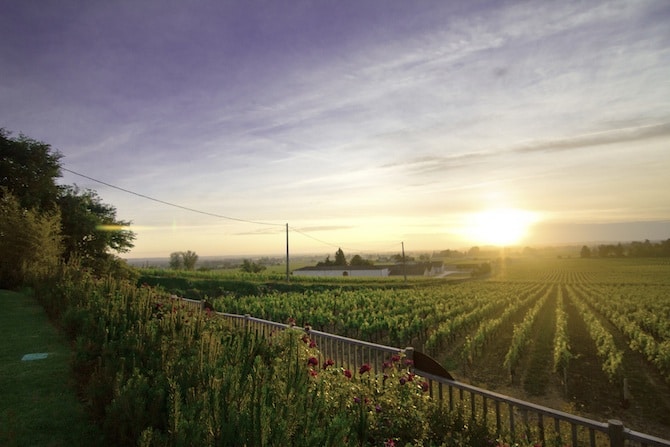
Bordeaux. The name evokes images of some of the world’s most pricey, complex, age-worthy and indulgent labels. While this French wine region makes some of the world’s most expensive wines, there are even more affordable and worthwhile options that come from the region. Luckily through the Sommelier Society of America, I get to sample both.
Today’s sommelier certification class is being led by Jordan Ross, who also taught last week’s Burgundy class. I enjoy the way he incorporates the wine tasting throughout the class, allowing us to slowly savor, appreciate and discuss each tasting, and I’m excited he’s today’s instructor.
Bordeaux is enormous, encompassing 120,000 hectares (300,000 acres), with 57 appellations and thousands of wines. According to Karen MacNeil in “The Wine Bible,” Bordeaux covers more ground than all of Germany’s vineyard areas combined, and is larger than any fine-wine region on the planet, home to 15,000 growers producing 700 million+ bottles annually.
France‘s Bordeaux is intersected by the Gironde River, separating it into two banks: the right bank and the left bank. While on the right bank you’ll find small estates producing mainly Merlot-focused wines, the left bank is full of large estates making Cabernet. You’ll also find the Dordogne and Garonne Rivers, and an hour away the Atlantic Ocean. Being near water means Bordeaux enjoys a maritime climate, keeping weather extremes at bay and allowing for a more stable situation. Interestingly, the word “Bordeaux” comes from “au bord de l’eau,” which means “along the waters.”
In the region reds are king, with 80% of wine being red and 20% being white. The most dominant grapes are the above mentioned Merlot and Cabernet Sauvignon for reds, as well as Sauvignon Blanc and Semillon for whites. In wine blends you may also find some Muscadelle, Ugni Blanc, Cabernet Franc, Malbec and Petit Verdot. Merlot is Bordeaux’s most popularly planted grape, adding smooth tannins, red fruits and a soft finish to the wines, while Cabernet Sauvignon, according to Mr. Ross, is the “noblest of all grapes” and gives wine a tannic structure and backbone. Cabernet Franc is most often found in blends, used for its acidity and ethereal quality.
For the white wines, Semillon is the main grape when it comes to sweet wines, as they can stand up to noble rot (we’ll get to that later) and produce rich, honey-flavored wines. Sauvignon is the dominant grape for dry whites — like those found in Graves — adding acidity and herbal freshness. Lastly the minor grapes add a touch of something special each their own: color and body (Malbec); tannins (Petit Verdot); and fruity flavor and floral aromas (Muscadelle).
In Bordeaux, wines tend to be more about elegance and complexity over power, which is one factor that helps make Bordeaux so special. To achieve this winning combination of finesse, balance, flavor intensity, richness and depth, Bordeaux grapes are blended together as to impart the unique characteristics of each onto the wine.
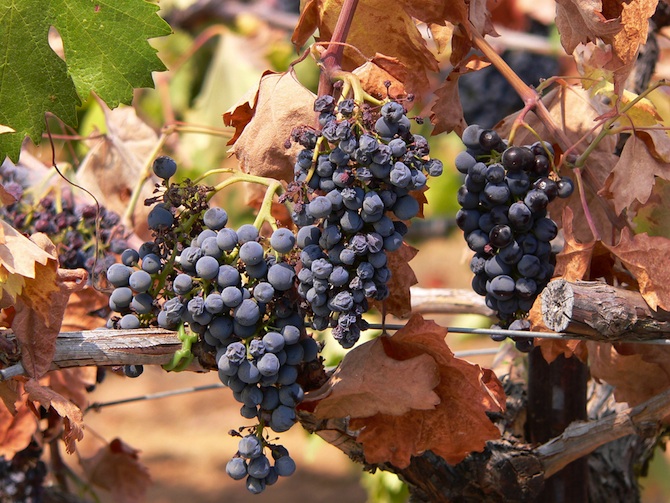
Important Subregions
The Left Bank
No discussion of Bordeaux would be complete without discussing some of the important communes and districts. On the left bank these include the Districts of Medoc, Graves and Sauternes. In the Medoc, which includes Medoc and Haut-Medoc, you’ll find six communes, including four that are truly notable: Margaux, St.-Julien, Pauillac and St.-Estephe, all located in stony soils near the river. Here you’ll mainly find reds — about 70% — first and foremost from Cabernet followed by Merlot. For a real treat, the wines from Margaux come from the most light and gravely soil, leading to wine with an enjoyably odd mix of delicacy and strength.
In Graves the soil is also gravelly, home to the most famous sub-appellation of Pessac-Leognan and its 10 small communes. It’s worth noting that, for the most part, the smaller the appellation, the finer the wine, so it’s not surprising this is where some of Bordeaux’s best wine originates from. While they produce slightly more red than white, they’re more well-known for their dry whites that are creamy, complex and zesty.
And in Sauternes, as well as the renowned Barsac, you can discover one of the few places on Earth dedicated to making sweet white wine — and doing it right! During the tasting portion of our class, we sampled a 2009 Chateau Grillon, which you’ll read more about in the tasting section of this article, which made me a devout fan of this heavenly commune.

The Right Bank
Then there’s the right bank, where Pomerol and St.-Emilion are the important subregions. In Pomerol — the smallest of all Bordeaux’s subregions — you’ll find only red wines made from Merlot (70%) and Cabernet Franc, with a tiny bit of Cabernet Sauvignon. The gravel and clay soils allow for wines that are full-bodied and velvety, with indulgent flavors and aromas like cocoa, cherry and plum. In nearby St.-Emilion you’ll find wines with similar characteristics, although the medieval vibe of the town is also worth the trip here. If you want to try the best of this subregion sample some Chateau Cheval Blanc, who grow 70% Cabernet Franc and makes wines with dark fruit and vanilla characteristics.
Entre Deux Mers
Between the Dordogne and Gironde Rivers you’ll also find Entre Deux Mers, which literally means “between two rivers.” This expansive area is known for its dry white wines blending Semillon, Sauvignon Blanc and Muscadelle. Typically these wines are light and zesty, with notes of lemon, vanilla and almond. Entre Deux Mers also makes a few reds, albeit not very noteworthy. In fact, because the quality difference is so vast between the whites and the reds of the region, the reds don’t carry the Entre Deux Mers appellation label, but instead Bordeaux or Bordeaux Superieur.
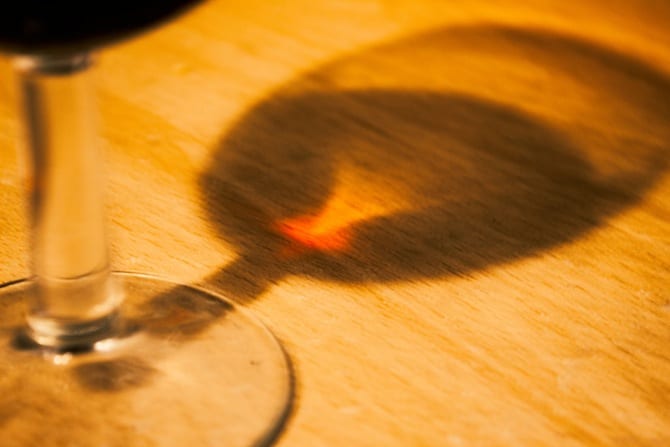
The Classification System
The classification system is the main reason — aside for some of the prices — many consumers find Bordeaux so daunting. Despite all being in Bordeaux, the different subregions vary in how they classify their wines. In fact, two Bordeaux subregions may have two classifications that sound similar or even the same but have completely different meanings depending where you are.
The original classification system was established in 1855, commissioned by the the Bordeaux Chamber of Commerce before the region showcased the wines at the 1855 Exposition Universelle in Paris. In Bordeaux, wine is classified by the estate (as opposed to Burgundy, where it’s classified by the vineyard). While this can sometimes defeat the purpose of great terroir being the determining factor of a high ranking wine, it’s how they do things in this region, and have for over 100 years.
One classification to comprehend is the 1855 Classification of Medoc, which refers to 60 Medoc chateaux — and one from Graves — that are further separated into five growths (or crus): First Growth, Second Growth, Third Growth, Fourth Growth and Fifth Growth. Keep in mind, these growths have nothing to do with the age of the vines, and instead refer to reputation for quality.
While the 1855 Classification exists in Sauternes and Barsac — where you find sweet wines — these 26 chateaux are categorized a bit differently, as the best chateau is labeled Premier Cru Superieur Classe (First Great Classified Growth) — where the only chateau with this label is Chateau d’Yquem — and then moves on to First and Second Growths.
In Graves it’s a bit harder — or easier, depending on your perspective — to decipher which is the best, as there are simply those that can call themselves Cru Classe (Classified Growth) and those that can’t.
In St.-Emilion — which was first classified in 1954 — the classification for these 82 chateaux must be kept up to date with a revision every 10 years. From top to bottom, it goes Premier Grand Cru Classe (First Great Classified Growth), — which is also divided into A and B categories — and Grand Cru Classe (Great Classified Growth).
Pomerol makes it easy for you: there is no classification system. For this region, you’ll just have to do your research or simply explore for yourself to figure out where to savor the best wines. According to Mr. Ross, people who drink this wine know who the good producers are, plus the wine will reflect that.
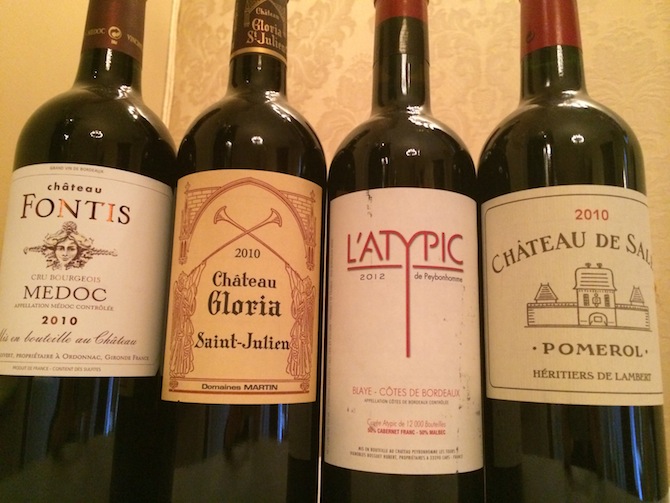
The Tasting
Our first tasting for the day is a 2012 Entre-Deux Mers Lafite Reserve Special Bordeaux, a budget-friendly find at $15 or less. It’s a light-bodied, aromatic white Bordeaux made with 40% Sauvignon Blanc and 60% Semillon, with fragrances of pear and grapefruit on the nose. According to Mr. Ross, Semillon is a neutral grape that adds body while Sauvignon Blanc offers intense fruitiness and high acidity, which the Semillon cuts and balances. This wine was never aged in wood, as this would cause it to lose its delicious pear essence.
Next we move on to a red from the left bank, a Chateau Fontis Cru Bourgeois, Medoc 2010 ($22). It’s made with 50% Cabernet and 50% Merlot, and has a smokey, earthy nose with a hint of leather. While the bouquet is amazing, it’s very rustic and a bit too aggressive for my taste. That being said, there’s no denying it’s clean, fresh and fruity with balanced acidity and tannins. Some aging would undoubtedly soften this wine and make it more approachable.
Next we sample a 2010 Lafite Reserve Speciale Pauillac, coming from the left bank’s most prominent commune, Pauillac, home to three First Growths. For this tasting, Mr. Ross has us take note of the slightly vegetal, bell pepper smell of the wine, common in cool climate regions like Bordeaux. You won’t find that in California due to its warmer climate. This $50 wine is smoother than the last we tasted, with the Cabernet’s tannins adding some ruggedness to the top of the mouth. The high tannins tell the drinker the wine would be good for aging.
A 2010 Chateau Gloria, St-Julien, $60, allows us to sample a wine that’s pretty close to a classified growth. According to Mr. Ross, if Bordeaux was to redo their classification today Chateau Gloria would be included. This wine has 65% Cabernet and 25% Merlot, as well as about 5% Cabernet Franc and 5% Petite Verdot. There’s some woodiness on the nose, which comes from the toasting of the barrels and will go away as the wine is aged. As there’s no fruit aromas it’s considered a closed wine — for now — as with some aging it will open up. Also with aging the chewy tannins would soften.
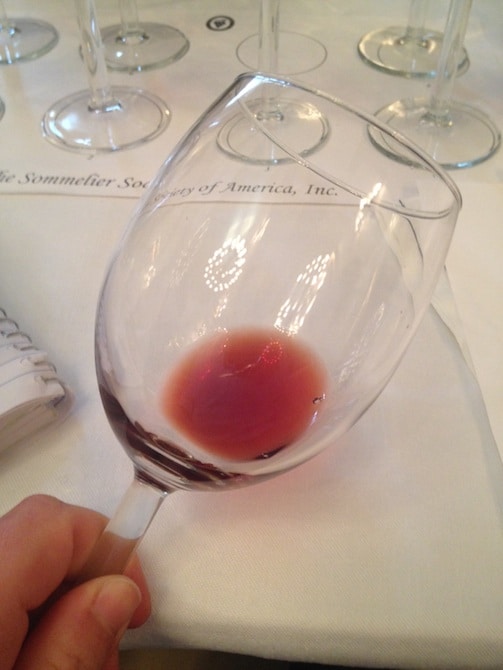
We’re still on the left bank, although we’ve gone back to being a bit more budget conscious with a 2012 L’Atypic de Peybonhomme, Cotes de Bordeaux, about $12 a bottle. “L’Atypic” means “atypical,” which is suitable as this wine features 50% Cabernet and 50% Malbec, a grape from Bordeaux that’s rarely seen in the region today as it doesn’t thrive there and is too temperamental (although in Argentina’s reliable spring season it grows well). This wine has lots of ripe red fruit on the nose, while on the palate it’s ripe and grapey with smooth tannins.
While Pomerol on the right bank typically produces very costly wines, our next tasting, a 2010 Chateau de Sales, Pomerol is a $40 bottle with the ability to age well — as well as be drank young — as it doesn’t have the high tannins shown in the previous wines.
Next came the most interesting tasting of the class, an old wine, a 1978 Saint-Emilion Chateau Belair. Mr. Ross asks someone to volunteer to open it, and I can’t help but be impressed with the girl who raises her hand’s courage, as I wouldn’t want to be the one to break the cork of something so special.
As the girl walks to the front, Sommelier Society of America Chairman Robert Moody chimes in, “I defy you to find any wine class where they’re opening a 1978 bottle. It’s quite a wonderful experience. No spitting!”
The class laughs. None of us would dare spit such a rare wine. At this point in the course we understand the privilege we have drinking such a hard-to-procure bottle.
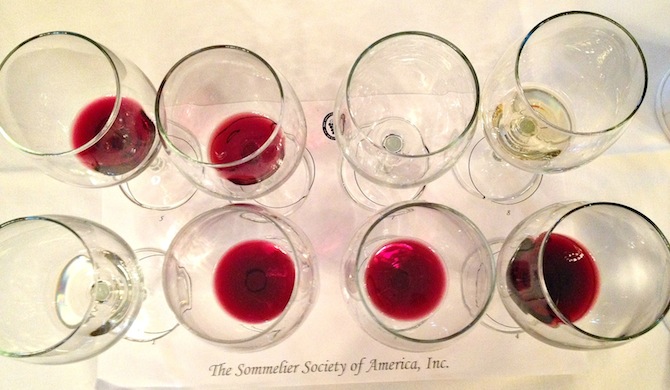
As the girl attempts to open the bottle, Mr. Ross offers some instruction, as you have to be careful to open the bottle without tilting as to not disturb the sediment, and to be gentle with the fragile cork.
“Be careful not to apply too much pressure,” he says. “Otherwise, the cork will just fall into the bottle. The cork is so old it can crumble into nothing.”
While a bit of the cork does indeed break into the bottle, Mr. Ross is able to effectively remove it and pour the class their tastings.
Once we each have a tasting in front of us we’re able to admire the beautiful color, a red with a brownish tinge. It’s been aged in a 1.5-liter Magnum bottle (equivalent to two standard 750 milliliter bottles), as the larger the wine bottle the longer you can age it. On the nose it’s very fruity with some floral notes, and on the palate I get a slight toffee finish.
The class ends with a 2009 Chateau Grillon, Sauternes, a wine made sweet by the “nectar of the gods,” botrytis. Interestingly, botrytis is actually a fungus that concentrates the sweetness of a grape by drying the grapes out and doubling their sugar content. Sauternes is world famous for its age-worthy sweet Semillon wines, which develop a rich honey character. Luckily, Semillon is tough enough to stand up to botrytis, and can even become enhanced by it. The wine is fantastic — especially at $26 a bottle — notes of apricot and orange pleasantly enveloping my palate.
Want more wine? Check out past articles in Sommelier Certification, an original Epicure & Culture series.
Have you visited Bordeaux or sampled a Bordeaux wine you loved? Please share your experience in the comments below.
Also Check Out:
Sommelier Certification: How To Truly Appreciate (And Understand) Champagne
Do You Want To Make Money Traveling The World?
Northern And Southern Rhone: Two Very Different Wine Worlds
Jessica Festa
Latest posts by Jessica Festa (see all)
- A Culturally-Immersive Adventure In Mongolia’s Altai Mountains - Jul 8, 2023
- This Recipe Sharing Platform Supports Women In The Culinary Industry (Labneh Recipe Included!) - Nov 5, 2020
- Hiking The Mohare Danda Community Eco-Trek In Nepal - Jun 3, 2020
- 6 Important Questions For Choosing A Responsible Yoga Retreat - May 18, 2020
- How To Create & Grow A Profitable Blogging Business (Ethically) - Jan 18, 2020

